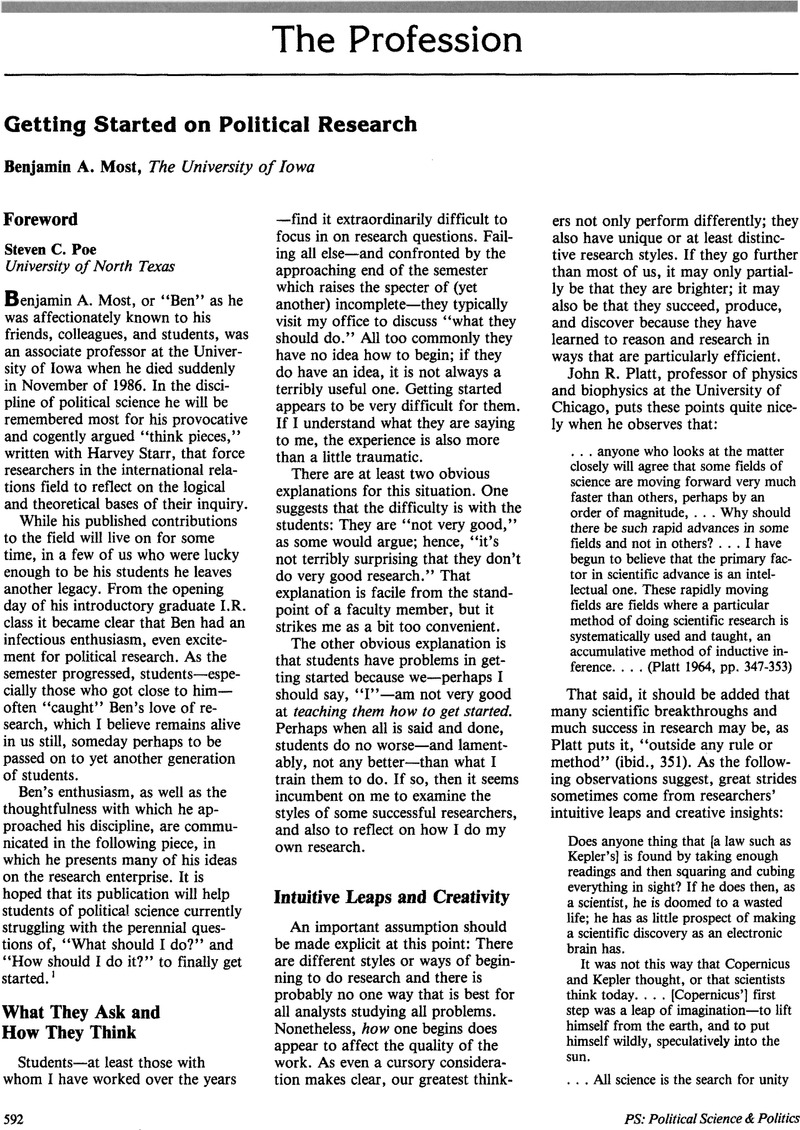No CrossRef data available.
Article contents
Getting Started on Political Research
Published online by Cambridge University Press: 02 September 2013
Abstract
An abstract is not available for this content so a preview has been provided. As you have access to this content, a full PDF is available via the ‘Save PDF’ action button.

- Type
- News
- Information
- Copyright
- Copyright © The American Political Science Association 1990
References
Broad, William J.
1985. “Subtle Analogies Found at the Core of Edison's Genius.” New York Times, 12 March, sec. C.Google Scholar
Lave, Charles and March, James G.. 1975. An Introduction to Models in the Social Sciences. New York: Harper and Row.Google Scholar
Most, Benjamin A. and Starr, Harvey. 1987. “Polarity, Preponderance, and Power Parity in the Generation of International Conflict.” International Interactions
13: 225–262.CrossRefGoogle Scholar
Most, Benjamin A. and Starr, Harvey. 1989. Inquiry, Logic and International Politics. Columbia, SC: University of South Carolina Press.CrossRefGoogle Scholar
U.S. News and World Report. 1981. “A Conversation with William N. Lipscomb.” April 20, p. 85.Google Scholar


